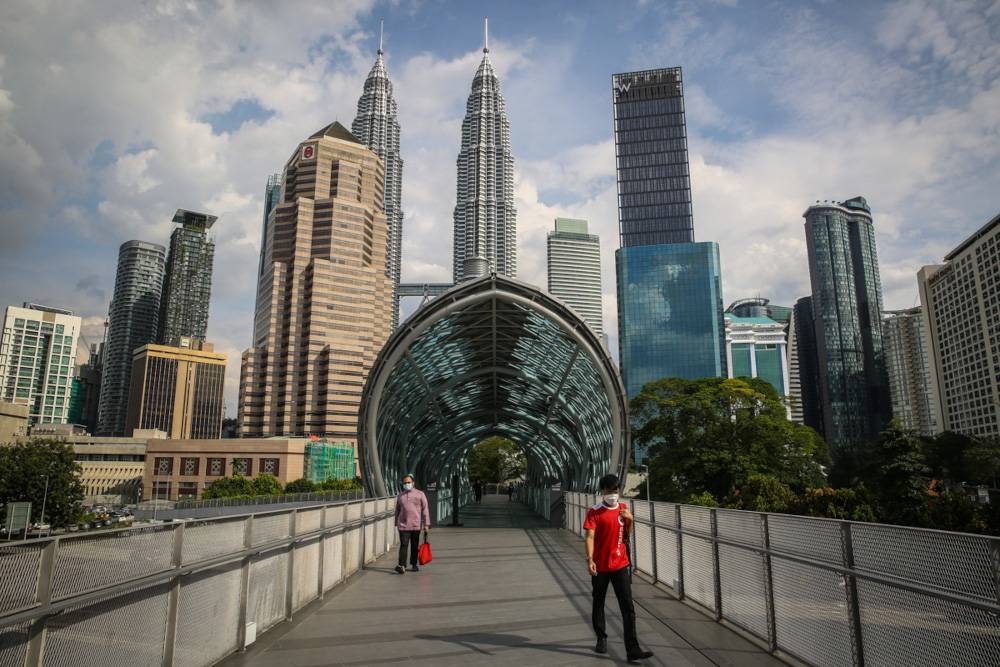NOV 25 — The Malaysian economy is in a period of “bust and boom and possible bust,” which will be challenging for the new government.
After the bust of the lockdown period, we have seen a massive boom in the last few quarters pushed by the reopening, a powerful fiscal expansion and a further “rakyat stimulus” of EPF withdrawals.
Now we have exceptional but unsustainable skyrocketing in the latest GDP growth figures of 8.9 per cent in Q2 and 14.2 per cent in Q3 with expected GDP final growth in excess of 8 per cent.
From one side, the injection of confidence might be seen as positive but on the other side, we should not be overly optimistic about the future.
The boom period poses a very delicate problem when managing the transition to a more moderate and realistic rate of growth we will experience the next year.

A slowdown is inevitable just in statistical terms because the high growth this year raises the baseline GDP and it is more difficult to grow from a higher base than from a lower base.
We also have international factors to consider and unfortunately, the lesson from history tells us that there is no decoupling; Malaysia is still exposed to international economic downturns.
So while the economic slowdown is likely, the depth and timing of it in Malaysia will depend on the policies of the new government and how it will manage the revision of expectations in this new phase.
Many commentators are stressing the fact that the new government should consider a structured plan of long-term economic reforms.
We agree with that but it is only one part of the agenda. We need to focus immediately on short-term issues in managing the delicate transition to slower growth next year. This means having effective and realistic targets and expectations.
The final aim is to create a modern, highly competitive economy in the international stage. The intermediate targets to consolidate and enhance competitiveness are first, intensifying inflation reduction; second supporting and sustaining the recovery of private investment in new technologies, third boosting the potential contribution from MSMEs, start-ups and scale-ups and finally skills and learning reform in the education system.
Reducing inflation is key to rebuilding the purchasing power of households and supporting private consumption.
Recently private consumption went up to exceptional levels pushed by EPF withdrawals. The latest data showed an unusual contraction on a quarterly basis, telling us that private consumption went too far to unsustainable levels.
This is now contracting and converging towards more stable consumption based on normal disposable income.
To manage this contraction and avoid a crash, we need strict coordination between the fiscal and monetary policy.
Fiscal policy should be oriented and focused on supporting the lower-income cohort of the population that is still struggling to survive on basic needs.
The second key target in the short-term should focus on consolidating recently positive investment trends. We need to reverse the long-term trend of a worrying decrease in the investment ratio over the last five to six years.
Relatively modest inflation in Malaysia in the last year has provided an important competitive advantage against Western and regional economies and the expected lower inflation environment creates room for a pause in interest rate rises to support more innovative investment.
The benefits of new technologies and large scale adoption of e-commerce can support the level of investment on GDP.
Another way fiscal policy can promote competitiveness in the short term is to support the leading role of start-ups, scale-ups and SME growth to leverage opportunities to improve productivity and investment returns.
It is not a question of big and new expenditure but a question of coordinating, organising and improving many existing investments and programmes that have not reached the critical mass to make an effective contribution.
Improving technology, competition and technical capabilities has to be followed by an upgrade in skills and especially high cognitive skills, emotional skills and social skills in the workforce.
We still have an education system based on content instead of skill development and complex learning. The new government should push the agenda of learning to get results over the medium term.
Focus on reducing inflation, encouraging modern technology investments, leveraging on start-ups, scale-ups and SMEs and promoting a dynamic learning environment are important drivers of growth that can help to manage the delicate transition of the economy in the new post-Covid-19 phase.
The new government will face challenges from day one but these four directions point to a consistent medium-term target to modernising and creating a really competitive Malaysia in an increasingly competitive global economy.
* Professor Paolo Casadio is an economist at HELP University and Professor Geoffrey Williams is an economist and Provost for Research and Innovation at Malaysia University of Science and Technology. The views expressed are those of the writers.
**This is the personal opinion of the writer or publication and does not necessarily represent the views of Malay Mail.





















